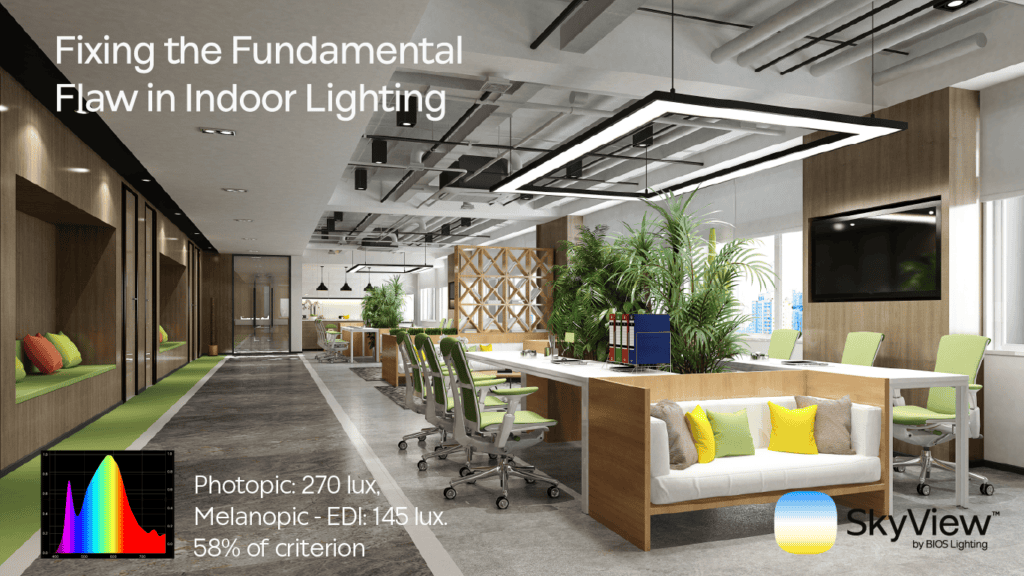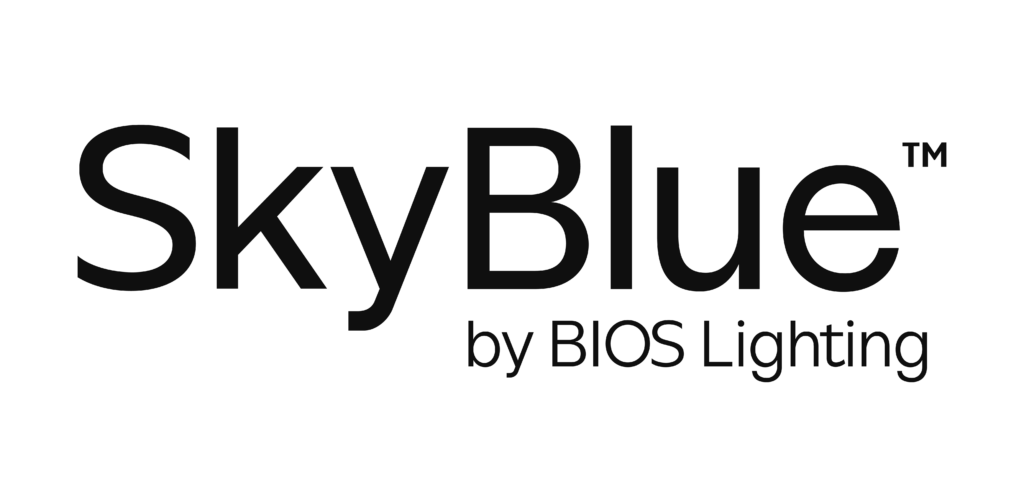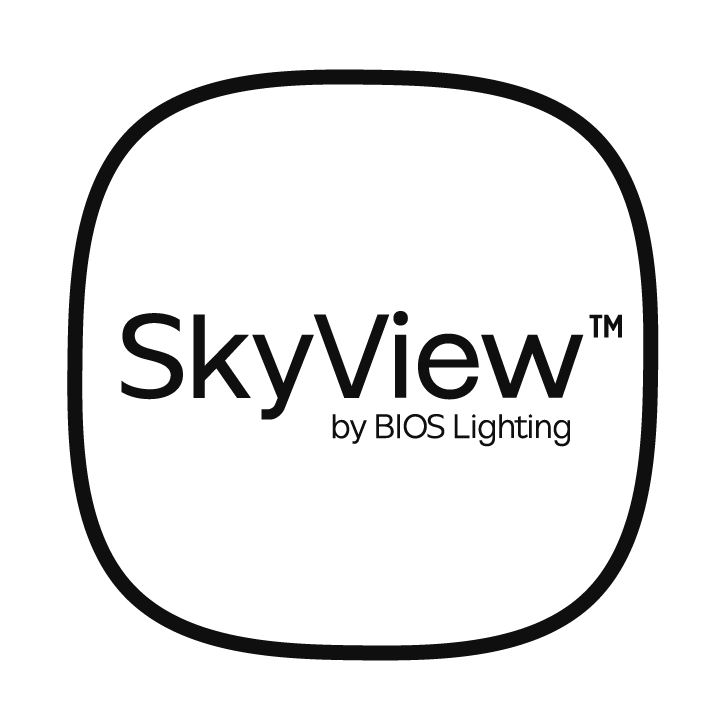Most modern buildings provide enough light for visibility and functionality. They may even have large windows to bring in natural views. But what if the real problem isn’t what you see—but what you don’t?
What’s hidden in our “adequately bright” lighting is a fundamental danger.
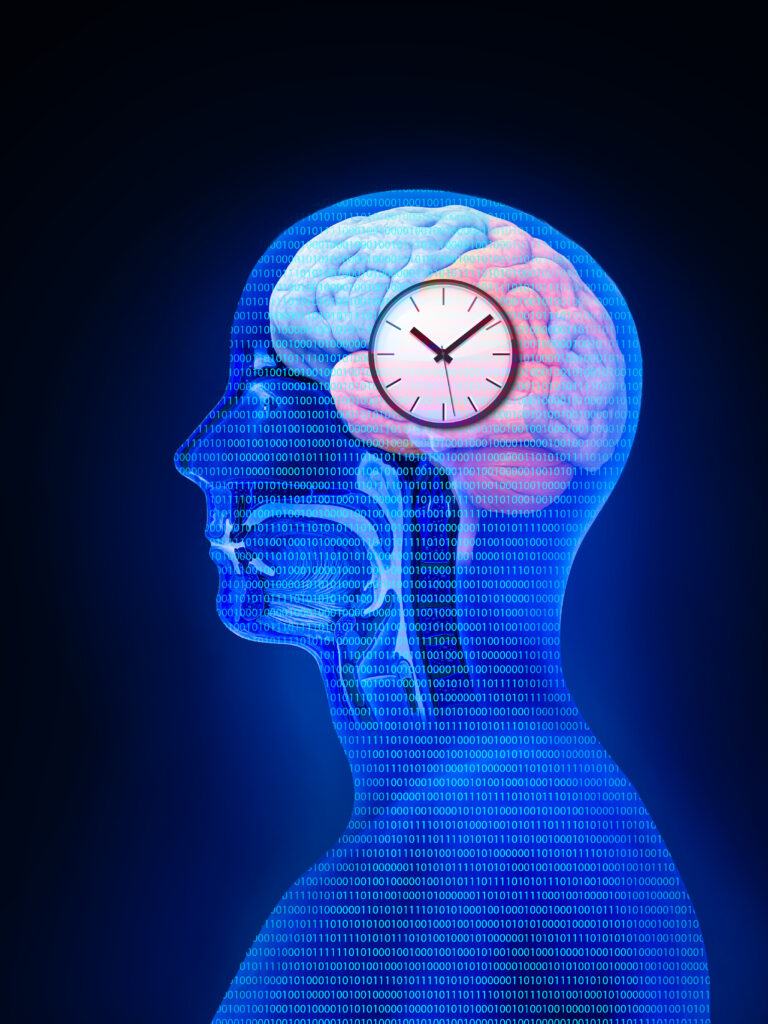
Truth in Lighting
Science is revealing a revolutionary new perspective on lighting: it’s not just about illumination—it’s about biology. The light we are exposed to directly influences our circadian rhythm, which regulates nearly every function in our brain and body. And here’s the uncomfortable truth about our comfortable designed spaces: most indoor lighting lacks the sky-blue wavelengths critical for keeping our internal clocks in sync.
Standard LED, fluorescent, or incandescent lighting creates an environment where our bodies receive only a fraction of the melanopic light we need for optimal health. This can lead to lower energy levels and mental focus, sleep disturbances, and even long-term health consequences.
Failed Fixes for Lighting
At first glance, the solution seems obvious: in the absence of dragging our desks outdoors, we should increase the sky-blue light spectra indoors to boost the circadian (melanopic) signal. This proves extremely difficult with conventional lighting as it requires either significantly increased power or higher CCTs that result in harsher, brighter, glary, and less energy efficient illumination. Color tuning just can’t get you comfortably to the threshold 250 lux (vertical plane) melanopic EDI (m-EDI) now suggested by biomedical research consensus and lighting industry recommendations. Its not a simple matter of pushing the blue channel.
What Is The Fundamental Fix for Indoor Lighting?
A new lighting solution is now available that brings us back to the fundamentals of outdoor light. We need electric light that restores the missing sky-blue light to indoor environments without having to redesign the building or tolerate unnatural lighting. By incorporating circadian-supportive lighting that mimics natural daylight in spectra AND spatial distribution, we can transform indoor spaces into environments that nurture our well-being.
The inspiration for the fix came from observing a fundamental feature of outdoor lighting: we typically see a spatial mix of blue sky spectra above blended with warmer colors of sun and earth – and despite being extremely high CCT, the OVERALL perception is a natural, pleasing illumination. Through BIOS SkyView™s patented GCO™ (Gradient Circadian Optimization) technology you can recreate the natural feeling of outdoor light by providing high melanopic (sky-blue) light at high angles (for vertical plane circadian stimulation) and warmer CCT at lower angles (for horizontal plane brightness).
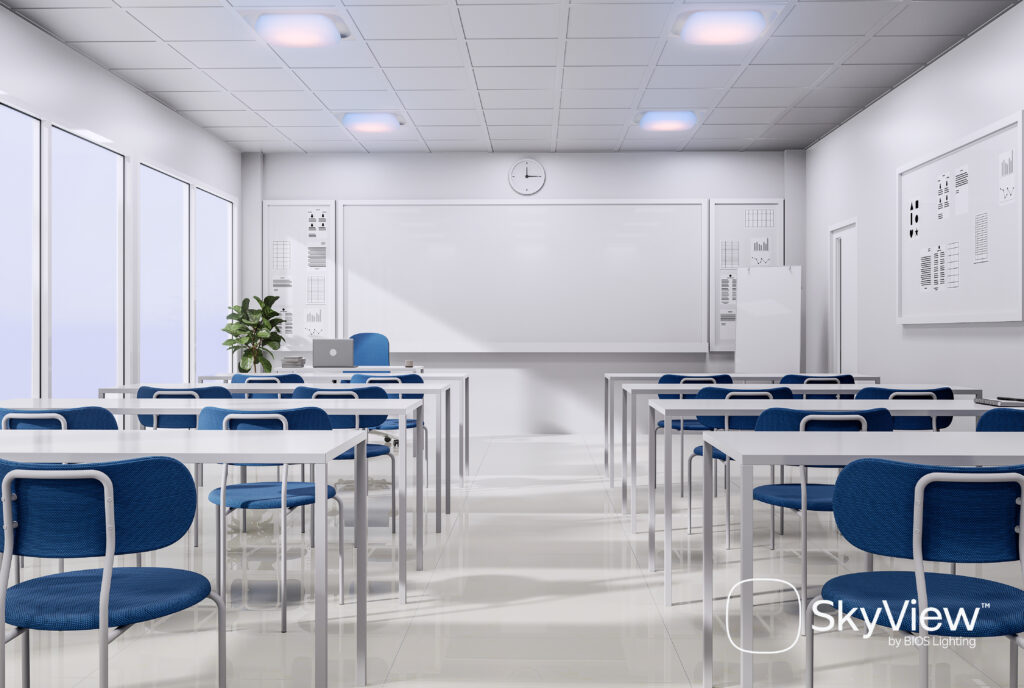

Photopic: 300 lux
Melaniopic-EDI: 285 lux
114% of Criterion
SkyView™ by BIOS Lighting Allows You To Light For Life
SkyView™ is the only product on the market that meets the rigorous RP-46-23, GSA P100, and WELL Building recommendations, all while maintaining remarkable energy efficiency—using 70% less energy than standard LEDs.
SkyView GCO™ Technology in Tile offers the following:
- 1.4 Melanopic Ratio
- Meets m-EDI of 250 lux at 0.4W/sq/ft
- Comfortable Circadian lighting without Excessive Brightness
- Patented GCO™ Technology
- Easy swap-in for 2×2 troffers
The fundamental fix is the future of lighting: It isn’t just about brightness—it’s about balance. And with the right light, we can create healthier spaces for work, rest, and life.

